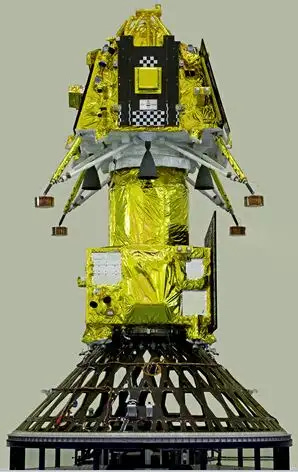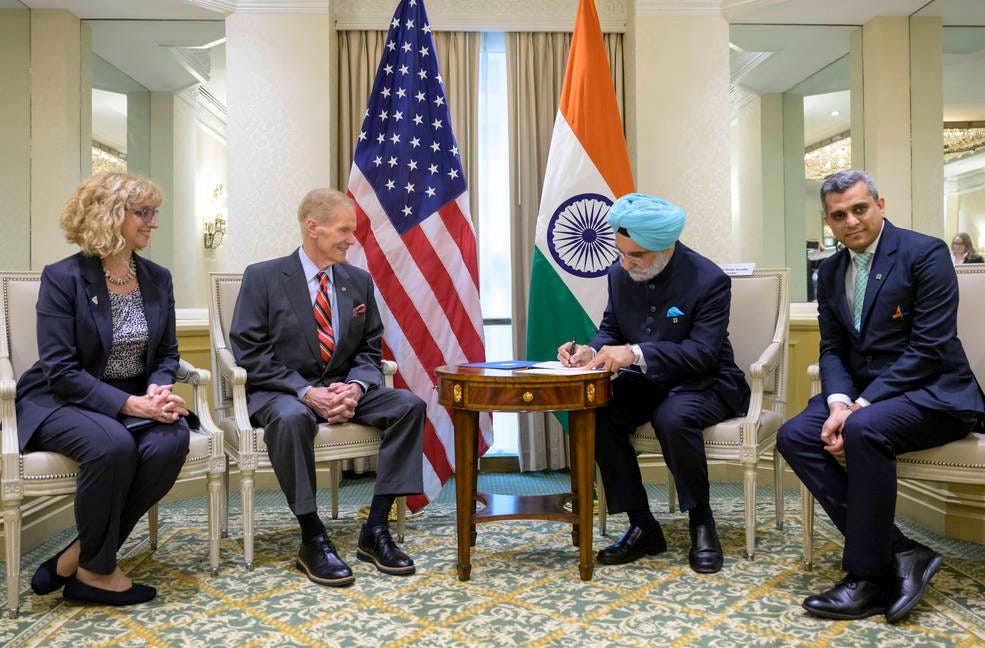Getting Ready for Chandrayaan 3’s launch
ISRO announced the launch date for Chandrayaan 3, India’s third mission to the Moon.
Announcing the launch of Chandrayaan-3:
LVM3-M4/Chandrayaan-3
Mission: The launch is now scheduled for
July 14, 2023, at 2:35 pm IST from SDSC, Sriharikota Stay tuned for the updates!
ISRO on Twitter (emojis removed)
ISRO held a press conference today at which they shared more details. Chethan Kumar of the Times of India has a Twitter thread on details shared in the press conference. ISRO has not shared these details on any of their official channels at the time of writing this.
Image: Chandrayaan 3’s Lander Vikram, engineering model. Source: ISRO
Image: Chandrayaan 3’s rover Pragyan, engineering model. Source: ISRO
Image: How Chandrayaan 3 will travel to the Moon? Source: ISRO
Chandrayaan 3 weighs 3,900 kg. The lander and rover module weighs 1,752 kg. It will land at 70 degrees South latitude on the Moon.
Image: Chandrayaan 3 propulsion module, and the lander and rover module mated to the payload adapter. Source: ISRO
Image: The LVM3-M4 getting assembled in the Vehicle Assembly Building (VAB). Source: ISRO.
After lift-off from Sriharikota on July 14, the spacecraft will reach the Moon in time to attempt a landing on August 23 or August 24. This is to take maximum advantage of sunlight on the landing spot that will allow the lander and rover to work on the Moon for the full Lunar Day (between Sunrise to Sunset at a particular point on the Moon, around 14-15 Earth Days).
If they miss this date for any reason, they will stay in orbit and try again in September, 2023.
The lander carries 4 instruments and the rover carries 2 instruments. But, landing is the most critical aspect of this mission.
After the landing, surviving a lunar day has its own challenge. Chandrayaan 1 faced issues with handling heat in orbit. Chandrayaan 2 has not faced this problem and it is expected that ISRO has mastered this issue.
“Once Sun sets, there'll be no power for lander & rover to function; All equipment will stop working. However, our tests show possibilities of battery getting recharged upon next Sun rise. If that happens, we could get another 14 days or maybe even more,” Somanath said. 7/n
The rover will also roll off the lander and will move on the surface of the Moon. ISRO will restrict the motion of the rover to the extent that it is visible from the lander.
I am excited to see the launch by an increasingly reliable LVM-3. Godspeed, Chandrayaan 3.
India signs the Artemis Accords
India is now a signatory of the Artemis Accords.
Image: Indian Ambassador Taranjit Sandhu, signs the Artemis Accords, as U.S. Department of State, Deputy Assistant Secretary for India, Nancy Jackson, left, NASA Administrator Bill Nelson, and Indian Space Research Organization, Space Counsellor, Krunal Joshi, right, look on, Wednesday, June 21, 2023, at the Willard InterContinental Hotel in Washington. India is the 27th country to sign the Artemis Accords, which establish a practical set of principles to guide space exploration cooperation among nations participating in NASA’s Artemis program. Credit: NASA/Bill Ingalls
I had argued that India must sign the Accords in an article that I wrote for The Wire Science on 29 May 2021. Very broadly, I argued that this would enable access technologies of to the US and other Accord signatories to build India’s capabilities in human spaceflight and interplanetary exploration.
Jatan Mehta writing in his must-read Moon Monday issue #132 also lays out beautifully the various reasons India should sign while also presenting the challenges that India faces in being a signatory.
The Takshashila Institution had put together an Issue Paper in July 2021 also concluding that joining the Artemis Accords was the best decision for India, at the present moment.
ISRO Chairman, Dr. Somanath gave a very important comment on India’s signature. He said that the Accords were “a political engagement with the US”. It is essentially a bilateral agreement on space between India and the US. I am happy that he clarifies that India would like to work with high-end space technologies and provide opportunities to the nascent Indian space industry. I think this is the correct direction to push the Accords from an Indian point of view.








